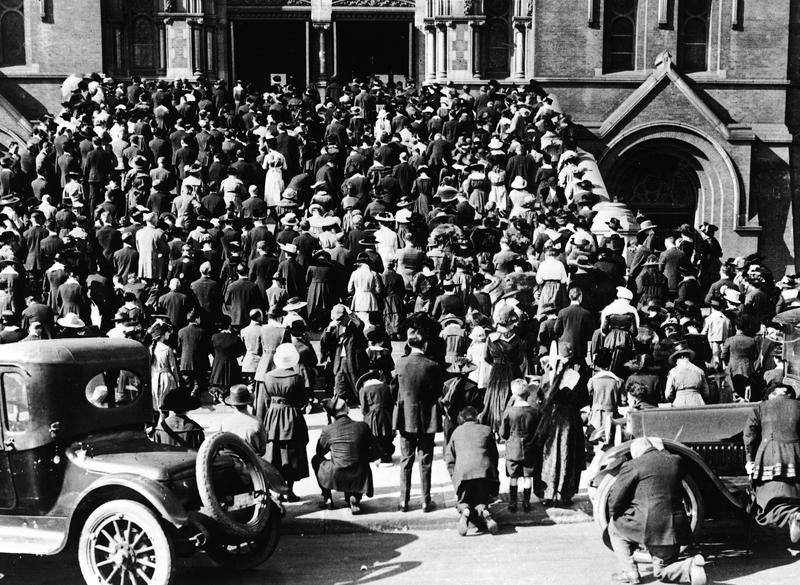Thanksgiving During The 1918 Spanish Flu
By | November 22, 2020

On Thanksgiving 1918, the world was in the throes of a pandemic that infected around one-third of the global population. That's around 500 million people, resulting in 675,000 deaths in the United States alone over four successive waves that finally came to an end in April 1920. During that time, Americans did their best to cover up and hunker down, but they also celebrated the holidays. Thanksgiving during the Spanish flu pandemic looked a little different from other years and even from city to city, but with a world war going on in addition to the public health crisis, Americans were begging for communal turkey and a nice cocktail.
San Francisco Spoke Too Soon
For much of 1918, local governments took drastic measures to reduce the spread of the Spanish flu. Cities like San Francisco shut down, but businesses that had been economically exhausted were clamoring to reopen. By the time Thanksgiving rolled around, San Francisco and other major cities were celebrating the end of the first wave of the virus, and on November 13, the San Francisco Examiner reported that, "Thanksgiving Day will be celebrated in San Francisco by the discarding of gauze masks, if the present rate of decrease in influenza continues." A week later, San Franciscans did indeed pull off their masks together at noon local time, to disastrous effect. One month later, 5,000 new flu cases popped up in the city.

A Churchtravaganza In Portland
To combat the spread of the flu, most cities shut down large gatherings, and that included those that took place at churches and others places of worship. For Thanksgiving, however, believers in Portland, Oregon planned a "grand reunion service" as a kind of giant religious blowout after staying away from public services for five weeks in a row. On November 16, a double ceremony was called to order by a multi-congregational mix of rabbis, priests, and pastors, one for the "suppression of autocracy" and a second to celebrate "the eradication of a frightful plague." Cases spiked again, not just because of the Thanksgiving celebration, but it definitely played a part.

Armistice Day Was A Whole Thing
Around Thanksgiving, cases surged across the country, mostly likely because of Armistice Day, when thousands of people rushed into the streets to celebrate the end of World War I on November 11. Just a few weeks later, Denver, Portland, Omaha, Atlanta, and Buffalo all reported a sharp rise in infections that they attributed to the celebration, and the day before Thanksgiving 1918, St. Louis experienced its highest daily count since the beginning of the epidemic. St. Louis and Buffalo both shut down public gatherings and ordered their people to stay home.

Outdoor Celebrations In Denver And Cincinnati
Many cities recognized that they weren't going to stop everyone from gathering on Thanksgiving, so they compromised by holding masked and/or outdoor celebrations. The churches of Denver held celebrations the day before Thanksgiving, but "special pains [were] taken to provide all the ventilation necessary," apparently consisting of a couple of electric fans "so as to change the air every few minutes." At the same time, Cincinnati held an outdoor Thanksgiving Day pageant.

Quiet Celebration In Sale Lake City
Thanksgiving in Salt Lake City was a private affair. The city quarantined itself, shops were closed and banned from holding any sales, and celebrations were canceled completely, postponed until Christmas Day. The city even placed placards on the front and back entrances of every building dealing with an infection. That didn't stop every Salt Laker from gathering around the turkey, but they did so furtively, "without any spectacular features." Likewise, Kansas City and Spokane both attempted to stunt the growth of the flu during the holidays with home quarantines and school closures, but Thanksgiving still filled Spokane's emergency rooms to the gills with the sick and infirm.

